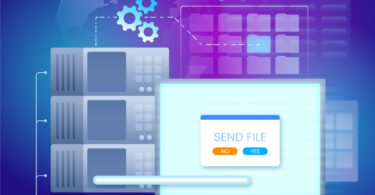Imagine a world where supply chains operate with the precision of a Swiss watch, anticipating every market shift, consumer trend, and logistical hurdle with uncanny accuracy. This isn’t a distant dream but a rapidly approaching reality, thanks to the groundbreaking innovations in demand forecasting.
As we navigate through a sea of technological advancements, data-driven insights, and AI-powered tools, the way businesses predict and respond to demand is undergoing a profound transformation. Let’s explore the trends and technologies that are set to redefine demand forecasting and, by extension, the entire supply chain ecosystem.
The Evolution of Demand Forecasting
Demand forecasting has come a long way from its rudimentary beginnings. In the past, businesses relied heavily on historical sales data, seasonal trends, and intuition to predict future demand. While these methods provided a basic framework, they often fell short in the face of unexpected market fluctuations and consumer behavior shifts.

Today, the landscape has shifted dramatically. The advent of big data, artificial intelligence (AI), and machine learning (ML) has revolutionized demand forecasting, enabling businesses to make more accurate, real-time predictions. These technologies not only process vast amounts of data but also identify patterns and trends that human analysts might miss. The result? More informed decisions, reduced waste, and enhanced customer satisfaction.
Key Trends Shaping the Future of Demand Forecasting
As we look to the future, several key trends are emerging, each poised to make a significant impact on supply chain demand forecasting.
1. Integration of AI and Machine Learning
AI and ML are no longer buzzwords but integral components of modern demand forecasting. These technologies analyze vast datasets to uncover hidden patterns, correlations, and anomalies. By leveraging AI, businesses can predict demand with greater accuracy, even in volatile markets. Machine learning algorithms continuously improve over time, refining their predictions as they process more data. This dynamic learning process enables companies to stay ahead of trends and make proactive decisions.
2. Real-Time Data Analytics
The ability to access and analyze data in real-time is a game-changer for demand forecasting. Traditional methods often relied on historical data, which could quickly become outdated. Real-time data analytics, however, allows businesses to respond immediately to changing market conditions, consumer preferences, and external factors such as economic shifts or natural disasters. This agility ensures that supply chains remain responsive and resilient.
3. Internet of Things (IoT)
The proliferation of IoT devices is another trend reshaping demand forecasting. Sensors embedded in products, vehicles, and warehouses provide a constant stream of data, offering unprecedented visibility into the supply chain. This real-time information helps companies monitor inventory levels, track shipments, and predict demand with greater precision. IoT-enabled demand forecasting also enhances supply chain transparency, enabling more effective collaboration between partners.
4. Advanced Analytics and Predictive Modeling
Advanced analytics tools and predictive modeling techniques are becoming increasingly sophisticated. These tools go beyond basic trend analysis, incorporating variables such as social media sentiment, weather patterns, and macroeconomic indicators. By integrating these diverse data sources, businesses can generate more nuanced forecasts that account for a wider range of influences. This holistic approach leads to more accurate and reliable predictions.
5. Collaborative Forecasting
The rise of collaborative forecasting is fostering stronger partnerships across the supply chain. By sharing data and insights, companies can develop a more comprehensive understanding of demand dynamics. This collaborative approach not only enhances forecast accuracy but also builds trust and transparency among supply chain stakeholders. When manufacturers, suppliers, and retailers work together, they can better align their operations and respond more effectively to market changes.
The Role of Technology in Demand Forecasting
Technological advancements are at the heart of the demand forecasting revolution. Here are some of the cutting-edge technologies that are driving this transformation:
Challenges and Considerations
While the future of demand forecasting looks promising, it is not without its challenges. Businesses must navigate several hurdles to fully leverage the potential of advanced forecasting technologies.
Data Quality and Integration
The accuracy of demand forecasts depends heavily on the quality of the data being analyzed. Inaccurate or incomplete data can lead to misguided predictions and suboptimal decisions. Ensuring data quality and integrating data from diverse sources remain critical challenges.
Technological Adoption
Implementing advanced forecasting technologies requires significant investment in infrastructure, training, and change management. Companies must be willing to embrace new technologies and invest in the necessary resources to realize their full potential.
Privacy and Security Concerns
The proliferation of data and IoT devices raises concerns about data privacy and security. Businesses must implement robust cybersecurity measures to protect sensitive information and ensure compliance with data protection regulations.
Human Expertise
While AI and ML are powerful tools, human expertise remains essential. Skilled analysts are needed to interpret the results generated by these technologies, validate predictions, and make strategic decisions based on the insights gained.
Conclusion
The future of demand forecasting is undeniably bright, with AI, ML, real-time data analytics, and other advanced technologies paving the way for more accurate and responsive predictions. As supply chains become increasingly complex and interconnected, the ability to anticipate demand with precision will be a key differentiator for businesses.
By embracing these technological advancements and addressing the associated challenges, companies can enhance their demand forecasting capabilities, optimize their supply chain operations, and ultimately deliver greater value to their customers. The journey toward a more agile and resilient supply chain begins with a commitment to innovation and a willingness to leverage the full potential of modern demand forecasting tools.
In this rapidly evolving landscape, staying ahead of the curve is not just an advantage—it’s a necessity. As we continue to witness the transformative power of technology, one thing is clear: the future of demand forecasting holds immense promise for those who are ready to embrace it.


![#3 Best Adult Video Hosting [current_date format='M,Y']: Enhancing Your Adult Content Experience adult Video hosting QloudHost](https://qloudhost.com/blog/wp-content/uploads/2023/06/adult-Video-hosting-QloudHost-1-1-scaled-375x195.jpg)


Leave a Comment